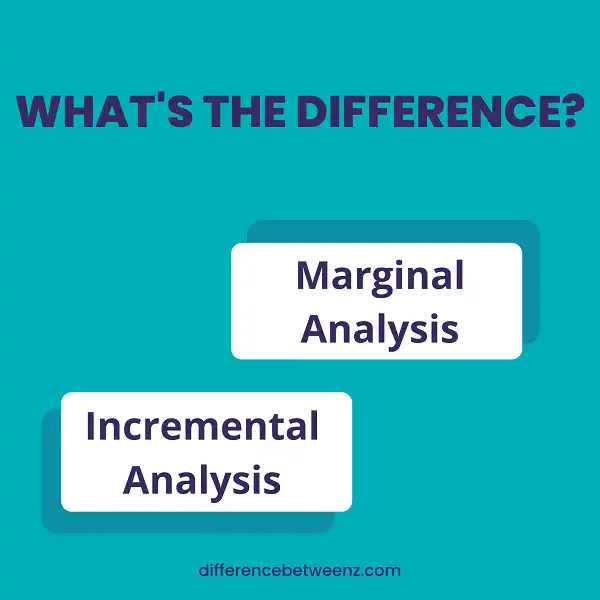When making business decisions, it is important to use the correct type of analysis in order to get the most accurate results. There are two main types of analysis: marginal and incremental. Marginal analysis looks at how changes in one variable affect another variable, while incremental analysis looks at how small changes in one variable can add up to a big change over time. In this blog post, we will explore the difference between these two types of analysis and provide examples of each.
What is Marginal Analysis?
Marginal Analysis is a tool used by businesses to evaluate the financial feasibility of proposed projects or courses of action. It involves assessing the incremental benefits and costs of a project in order to determine whether or not it is worth pursuing. In essence, marginal analysis is a way of weighing the pros and cons of a decision in order to make the most financially sound choice. When making business decisions, it is important to consider all relevant factors, both quantitative and qualitative. However, at the end of the day, businesses must always be mindful of their bottom line.
What is Incremental Analysis?
Incremental analysis is a tool used by businesses to make decisions about investments. It involves comparing the costs and benefits of different options in order to choose the most efficient option. Incremental analysis is often used when there is a limited amount of time or money available for investment. In this situation, it can help to identify the option with the greatest return on investment. Additionally, incremental analysis can be used to compare different financing options, such as a loan or an equity investment. This type of analysis can also be used to evaluate the potential impact of changes in costs or revenues.
Difference between Marginal Analysis and Incremental Analysis
- The key difference between the two is that marginal analysis looks at the cost or benefit of a single additional unit, while incremental analysis takes into account all fixed and variable costs.
- For example, if a company is considering raising the price of its product by $1, the marginal analysis would only look at the additional revenue that would be generated from the price increase.
- The incremental analysis would take into account not only the additional revenue but also the cost of producing the additional units and any other potential expenses. As a result, incremental analysis is generally more comprehensive and can provide a more accurate picture of the financial impact of a decision.
Conclusion
Marginal analysis is the process of examining the change in total benefits and costs that arises when one more unit of a good or service is produced, consumed, or shifted from one use to another. It considers only the additional benefits and costs associated with producing, consuming, or shifting that last unit. Marginal analysis is used most often in business decision-making. Incremental analysis is very similar to marginal analysis but takes into account all past benefits and costs so as not to miss any relevant information. Incremental analysis can be thought of as an extension of marginal analysis where we also include sunk (or past) costs.


